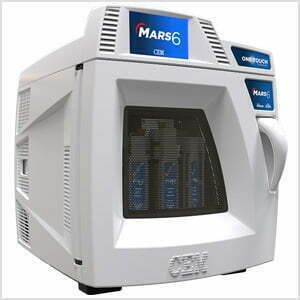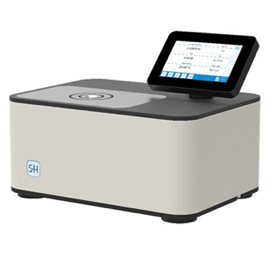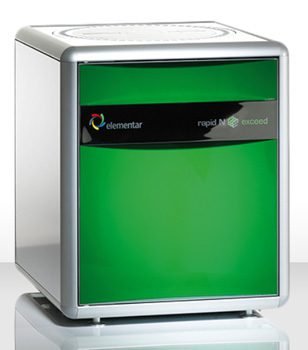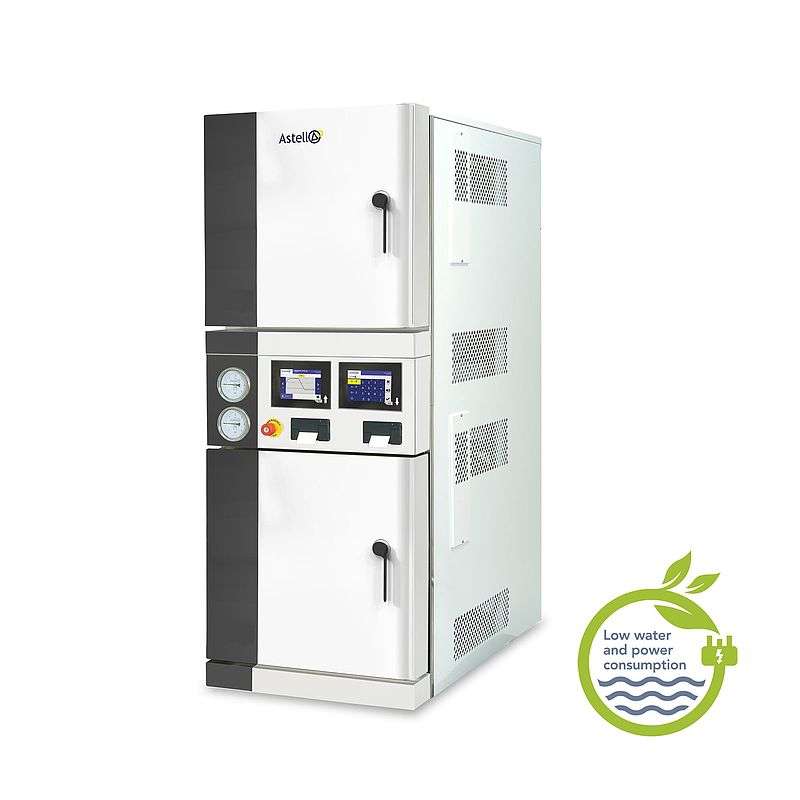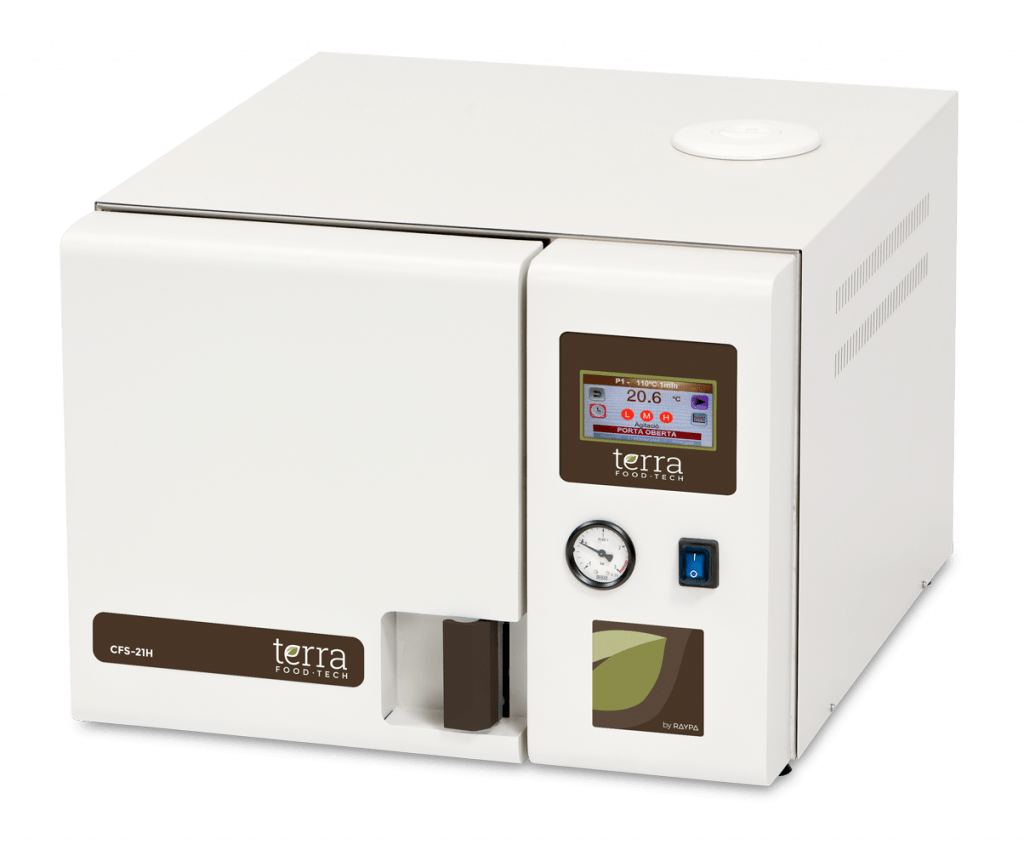December is Food safety month
WORLDWIDE FOOD SERVICE SAFETY MONTH
Food safety and analysis is not only a hot topic in December. It should be a priority all the time, 365 days a year. Every day, we are in contact with R&D labs, food & drinks processing companies, and we know how much attention you pay to the safety of your products.
This month, we would like to highlight devices that can simplify your work regarding food safety.
We highlight devices for the extraction and analysis of Pesticides and PFAS/PFOS, devices that measure sugar and proteins in food with high accuracy, and we remind you of our sterilization solutions.
Of course, as always, we are here to assist you in your choices, so don’t hesitate to ask us, if you have other needs.
Due to their persistent nature, there is increasing concern of Per- and Polyfluoroalkyl Substances (PFAS) in our water, soil, food, and in our environment as a whole. More and more regulations are being implemented with respect to PFAS so labs need to be prepared to meet these needs. In order to analyze PFAS in solid matrices, you must first extract the compounds. With an evergrowing amount of PFAS work being done on solid matrices such as soil and foodstuff, there is a need for a rapid and efficient extraction.
The extraction of PFAS can be challenging given the susceptibly to contamination and the low levels in which these compounds are present. Existing techniques do not offer a method that is rapid, simple, and efficient. In this study, a novel extraction system, the EDGE, combines the processes of pressurized fluid extraction and dispersive solid phase extraction is explored. Recovery and RSD values for the extraction of lettuce, cranberries, potatoes, strawberries, and carrots will be presented. The extractions were performed on the EDGE and analysis was done via a Waters Xevo TQ-XS with an Acquity I Class PLUS equipped with a PFAS kit. The EDGE offers an efficient extraction of PFAS from products in less than 15 minutes in one simple automated process. With the EDGE, a rapid, simple, and efficient solution for PFAS testing is achieved.
Conclusion:
The extraction of PFAS from various products, strawberry, lettuce, cranberry, carrot, and potato, using the EDGE has proven to be a reliable, efficient and robust technique. With one simple, rapid, and efficient automated PFAS extraction method, it can be applied to any food commodity when properly prepared.
In the modern world, consumers increasingly want to know what is in their food and want to make sure that the substances they are putting in their body are safe. This, along with stringent regulatory requirements, is leading the call for improved extraction of food contaminants such as pesticides.
The QuEChERS method has been shown to be practical for pesticide analysis on a number of different sample types. While the QuEChERS method is relatively quick compared to other methods, it is also a manual and tedious process. Hence, a rapid, simple and efficient automated method for the extraction of difficult food matrices that improves the pesticide extraction process is being reviewed. The extraction of some difficult food matrices such as lemons and potatoes is performed via extraction on the EDGE and compared to the QuEChERS method. The EDGE methods utilizes the same solvent and clean up sorbents, making it a simple transition for labs currently running QuEChERS. The EDGE extraction allows for extraction, clean-up, and filtration in less than ten minutes. Filtration sub 0.3 μm is possible on the EDGE allowing for direct injection of the extract in a UPLC for analysis. The EDGE extraction method is applicable to many different types of difficult matrices including dry commodities such as tea and spices. No matter the matrix on the EDGE the same rapid, simple and efficient automated method is sufficient leading to good pesticide recovery data. The extraction and determination of multiple pesticide residues from these difficult matrices will be described showing improved recoveries and workflow in comparison to QuEChERS.
Conclusion:
The extraction of lemon and potato using the EDGE has proven to be a reliable efficient and robust technique. With its simple pesticide extraction method, it can be adapted for any properly prepared food commodity. The incorporation of Q-Matrix Hydra when preparing the sample helps to support the sample, improves dispersion through mixing, and removes water. In addition, comparable or better recoveries and RSD values were obtained when compared to the traditional QuEChERS method.
With the continued globalization of trade, it has become increasingly important in recent years to ensure the safety of the food supply, as there have been numerous instances of metals contamination. Fast, accurate food analysis is essential to ensuring the safety and quality of the food supply. As spectroscopic instrumentation has improved and lowered detection limits, CEM has made advances in microwave sample preparation technology to simplify the technique and ensure complete digestions.
Recent studies have shown that absorption of even low concentrations of some metals can have adverse effects on the human body. In lower concentrations, the symptoms of metals poisoning can include nausea and abdominal pain. In higher concentrations, metals contamination can lead to even more severe diseases.
Therefore, instrumentation manufacturers, such as ICP-OES and ICP-MS suppliers, have developed more sophisticated, user-friendly platforms that allow for higher throughput and simultaneous analysis of multiple elements in shorter periods of time. However, most food samples require some form of sample preparation prior to final analysis.
With the introduction of the MARS 6™ Microwave Sample Preparation System, CEM has addressed the limitations of traditional batch microwave digestion systems and afforded options to the industry that were previously unavailable. The system is engineered to provide a completely digested sample that will not require a filtration step, will minimize the labor involved in preparing food samples for acid digestion and vastly increase throughput.
With samples digested in sealed containers, cross contamination is prevented
and the recovery of even volatile elements is possible. Analyte recovery is accurate and reproducible.
Sugar is an important nutrient for the human body. However, the quantity and especially the quality of the sugars we take in must be monitored.
SCHMIDT + HAENSCH refractometers can be used for purity investigations, sample recognition, dilution control or composition. They are also used for characterization of substances or for determination of substance composition, especially of organic liquids or raw materials.
Protein analysis is an essential tool for quality control in the food and animal feed industry, while the analysis of nitrogen plays an important role in the production process of nitrogen fertilizers and in the assessment of soil fertility. The Rapid N is a nitrogen/protein analyzer according to Dumas. In day-to-day business it performs routine analyses of food or feed up to 1 g sample weight in your laboratory. The rapid N exceed represents the fast, safe and environmentally friendly alternative to the classical Kjeldahl method.
Advantages of Dumas combustion analyzers over analyzers based on the Kjeldahl method
Safer to work with (no use of toxic chemicals)
Higher sample throughput
Less labor time
Eco-friendly (no toxic waste)
Lower cost per analysis
The importance of microbiological testing in the food and beverage industries is in the public eye, now more than ever.
What is a ‘fluid load’?
Fluid or liquid loads typically comprise solutions or chemicals used in the laboratory environment, e.g. a growth medium, but could be any non-solid that requires sterilization. A growth medium or culture medium is a solid, liquid or semi-solid designed to support the growth of micro-organisms or cells under test conditions. Different types of media are used for growing different types of cells.
An autoclave is used to sterilize media before use. Although many types of media require sterilization at 121°C for 15 minutes, different sterilizing temperatures and times may be necessary for certain types of media, and therefore any autoclave used for the sterilization of media must be capable of sterilizing at a variety of temperatures.
Fluid discard
Fluid discard loads will inevitably comprise of waste fluids that need to be sterilized prior to being disposed of. Typical fluid discard loads could consist of used or redundant media such as Nutrient Broth, reagents, liquid specimen samples, cleaning solutions, biological waste etc.
Challenges of liquid loads
A fast heat up and cool down is beneficial to maintain the quality of the finished product and prevents ‘over cooking’ which leads to a deterioration in the quality of the growth medium.
Should the autoclave be opened at a temperature higher than 80°C, the sudden change in pressure can not only cause the media (or other fluids) to boil over; there is also a significant danger that bottles could break or explode!
Boil-over of fluids is usually caused when the chamber pressure during the cooling stages falls quicker than the temperature in the load. All Astell autoclaves can be used to sterilize fluids, but to do so quickly necessitates some cooling options. If fast cooling is required you
need to replace the steam with air ballast during cooling to reduce the possibility of boil over. A water jacket (with an internal fan, when required) is an extremely efficient means of cooling and will require the addition of air ballast to prevent the boil-over of bottled media etc.
Non-rigid containers will benefit from ramped cooling where the chamber pressure is lowered in a number of steps to coincide with the load temperature to prevent non-rigid containers deforming or bursting during the cooling stage.
A benchtop autoclave has a variety of uses, being suitable for sterilizing laboratory glassware, petri dishes, media, plastic receptacles and containers and occasional discard loads.
Depending of your needs, you can choose an integrated heater in chamber or an integral steam generator. There are so many sterilising possibilities, we suggest you to contact us, or to take a look at all our sterilizers
If you want to see more about this subject, watch the free webinar Elemental Analysis After Microwave Digestion of Various Food Products
Microorganisms are commonly present in foods. Depending on their characteristics and growth potential, they can play different roles: commensals (neither metabolic nor adverse health effects), probiotics (health benefit on the host), pathogens (adverse health effects on the host), food cultures (technological benefit), and spoilers (deleterious metabolic activity on the food product).
Food spoilage is a metabolic process that causes foods to be undesirable or unacceptable for human consumption due to changes in sensory characteristics.
Food deterioration can also happen in canned food. To avoid any spoilage, the Terra Food-Tech Autoclaves are developed with a special focus on:
- Control of the presence of residual O2 and CO2 to minimize the risk of microorganisms deteriorating the contents.
- Seal integrity inspection.
- Detection of container leaks.
TERRA Food-Tech® offers a line of compact autoclaves with counterpressure and fast cooling for the food industry capable of pasteurizing and sterilizing preserves and ready meals in a reliable, comfortable and safe way.
Other key advantages:
Preparation of pilot batches: You can quickly and agilely test your idea by manufacturing a pilot batch or running a battery test without the need for too much raw material. With this you can study the viability of a new product before producing on an industrial scale.
Total control of all parameters: 5” touchscreen with 50 programs, adjustable with up to 5 initial and 5 final segments, independently programmable for time, pressure and temperature. Temperature regulation by chamber or by F0 or P0, with on-screen display and recording of the real F0 and P0 values, with absolute traceability.
All kinds of packaging and food: Terra Food-Tech® compact autoclaves are designed to cook, pasteurize and sterilize food in a precise and reproducible way in all types of packaging, including: glass jars, trays, bottles, envelopes, pouches, plastic containers or cans.
You tell us what container you want to work with and Terra Food-Tech can adapt the racks, baskets and load supports to your needs. Drilling kits and accessories available to cover all types of applications.



